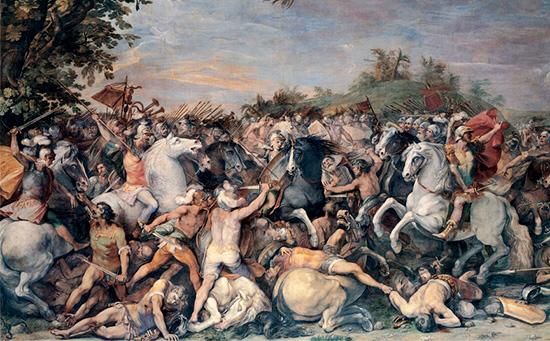Inizi della Repubblica Romana

Gli albori della replica biblica di Roma sono caratterizzati da una serie di crisi e frizioni sia interne che esterne.
The ousting of the last king has left intact a part of the population that still hopes for the establishment of a new monarchy, while the other faction supports the republican senate.
La cacciata dell’ ultimo re ha lasciato intatta una parte della popolazione che spera ancora nell’ istituzione di una nuova monarchia, mentre l’ altra fazione sostiene il senato repubblicano. Inoltre le due grandi classi sociali che caratterizzano l’ ossatura della polis romana sono in costante conflitto , la gens e la plebe e i contrasti sfocheranno spesso in rivolte, faide e vere e proprie guerre civili.
The Senate establishes a law that provides for the death penalty for anyone aspiring to the role of king. Attacks also continue from the surviving populations close to the borders who often violate the borders with raids and thefts, Sabines and Etruscans, rulers of the area but now in decline are still the most bitter rivals of Rome which reacts with the establishment of the office of Dictator , a strong man to whom special powers are delegated in the military field to be able to carry out wars and protect the city, is the first real reform in the international field that projects Rome from a small city-state into a reality that is beginning to take its first steps towards a military expansion outside its borders.
In 469 the city of Anzio was taken while in 462 BC. the citizenship of Volsci was overwhelmed, as Tito Livio tells it:
«There it was just before the name of the Volsci was wiped from the face of the earth. In some annals I have found that between flight and battle there were 13,470 dead, that 1,750 were captured alive and that the regalia conquered amounted to 27. Even if these figures are affected by a certain tendency to exaggeration, nevertheless it was undoubtedly a great massacre.»

(Tito Livio, Ab Urbe Condita, III. 8)
In 405 the siege of the city of Veii was put in place, a siege that would last ten years in which the senate decided to keep the army active even during the winter. It is the first time that a decision has been made to implement this reform, previously the army was sacked at the beginning of winter and the soldiers returned to the city. This will subsequently lead to the creation of a stable army used all year round. Rome is already thinking of a possible expansion and the fall of Veii brings a huge spoils of war that will be divided between soldiers, citizens and partly accumulated in the state coffers, in addition to the control of the other bank of the Tiber .
